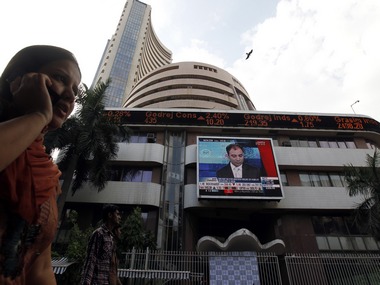Nassim Nicholas Taleb, author of Fooled by Randomness and Black Swan, once said that economists and forecasters do immense damage by giving exact estimates of growth, expenses, profit, etc. This creates a false impression that the future can indeed be predicted.
As we look at what is ahead for the markets in 2012, it is worth keeping Taleb’s advice in mind.
If we look at targets for the BSE Sensex indicated by research firms at end of 2010 for 2011, most of the numbers varied between 20,000 and 22,000. Much has changed since the beginning of 2011 and the Sensex has fallen 25 percent over the past year, ending at 15,454. What we have gained is acceptance of unpredictability and hence we need not get into exact numbers on where the markets will be in 2012.
Why has the Sensex fallen?
[caption id=“attachment_101142” align=“alignright” width=“380” caption=“Markets will rally four to six months after a rate cut cycle begins. Reuters”]  [/caption]
Though one of the main dampeners of 2011 has been the absence of progress in policy reforms, research firms like Kotak and UBS agree that the downtrend is mostly cyclical in nature. A Kotak report says that the percentage of proposals receiving environmental and forest clearances has remained similar to levels seen over the last five years. The present slowdown in capital expenditure (capex) is more related to the cycle moderating after a period of strong activity as financial closures had grown 11-12 times over financial years 2003-10.
But it is also true that the cyclical slowdown in investment has been further negatively impacted by stubborn inflation, high interest rates and depreciating currency. If inflation stabilises to 6-7 percent by March 2012, UBS says, policy rate cuts would soon follow. The rupee could also gain. The stabilisation of both inflation and exchange rates could slowly revive investments.
Worst-case scenario
However, the benefits of a rising capex cycle will take some time coming. The markets are seen to rally four to six months after a rate cut cycle begins. Meanwhile, corporate earnings growth could slow down to 10 percent against expectations of 15 percent. Once corporate growth slows down, banks could be hit due to rising concerns about asset quality. If that indeed happens, it will provide good buying opportunities for investors at cheap valuations. Going by different estimates by UBS, CLSA, and Bank of America Merrill Lynch, markets could correct even by another 10-15 percent before rising.
When could things improve?
So if the policy cuts begin in the first quarter of next financial year, the markets could see some improvement towards the last quarter of 2012. But one must not forget that, as a Citigroup report points out, the Indian economy and markets have become increasingly dependent on external capital for corporate growth, managing the current account deficit and keeping interest rates low. So policies and government action and fiscal deficit levels could be some key things to watch out for before business confidence rises.
Things to watch out for
The FIIs were not favourable to Indian markets in 2011. In the second half of 2011, they were net sellers and sold almost $1 billion of equities (Rs 5,300 crore). Fiscal consolidation and favourable business sentiment in the market will be crucial for the Indian markets to recover next year with the help of more FII inflows.
What to buy
Though it is difficult to consolidate sectors that could perform well next year, it is perhaps too early to write off defensive sectors like FMCG that will continue to do well despite high valuations. If the rate cycle is reversed and policy decisions are quickened, aggressive investors could even bet on banks and financial services, transmission and distribution sectors, capital goods and infrastructure. But for most firms, investing is less of a sectoral choice and more about individual stocks.
Key takeouts from research
Kotak keeps its bet on power transmission and distribution and mining.
Top picks for Citi are Axis Bank, SBI, Tata Motors, Jindal Steel & Power and Dr Reddy.
ICICI Direct asks you to not insist on timing stocks but going for quality accumulation. They have a buy on Tata Motors, Lupin, TCS and Bharti Airtel. They have an “Underperform” rating on NTPC.
For BoA Merrill Lynch, top picks are Sun Pharma, Lupin, Maruti, HDFC Bank and ICICI Bank. In the mid-cap space it recommends a buy onApollo Tyres, Havells, Exide, Dish TV, Manappuram. It is bearish on Bajaj Auto, Tata Steel, and Ambuja Cement.


)
)
)
)
)
)
)
)
)



